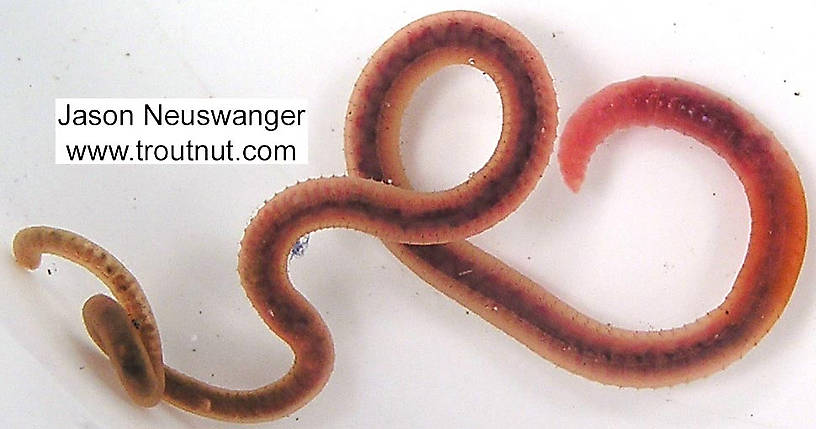
Hex Mayflies
Hexagenia limbata
The famous nocturnal Hex hatch of the Midwest (and a few other lucky locations) stirs to the surface mythically large brown trout that only touch streamers for the rest of the year.
Featured on the forum

This one seems to tentatively key to Holocentropus, although I can't make out the anal spines in Couplet 7 of the Key to Genera of Polycentropodidae Larvae nor the dark bands in Couplet 4 of the Key to Genera of Polycentropodidae Larvae, making me wonder if I went wrong somewhere in keying it out. I don't see where that could have happened, though. It might also be that it's a very immature larva and doesn't possess all the identifying characteristics in the key yet. If Holocentropus is correct, then Holocentropus flavus and Holocentropus interruptus are the two likely possibilities based on range, but I was not able to find a description of their larvae.

Troutnut is a project started in 2003 by salmonid ecologist Jason "Troutnut" Neuswanger to help anglers and
fly tyers unabashedly embrace the entomological side of the sport. Learn more about Troutnut or
support the project for an enhanced experience here.
Worms
This common name refers to only one class. Click its scientific name to learn more.
Animal Class Clitelatta-Oligochaeta
These are pretty much always called Worms.
The subclass Oligochaeta in the class Clitelatta contains worms.

I know most people know what a worm looks like, but when trying to tie an imitation, the memory is often a poor source of accurate color information, and a picture helps to get the right shade. One thing that surprised me in my sampling is that quite a few worms did turn up. Before I was a fly fisherman, when I used worms for bait, I always thought they were merely a tantalizing morsel and not a regular trout food, but I've since realized that there are quite a few worms that live in the sediment on a stream bottom.
See 1 more specimen...

